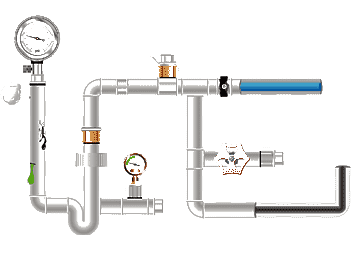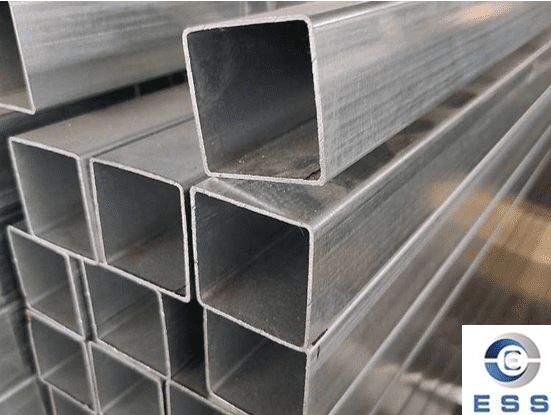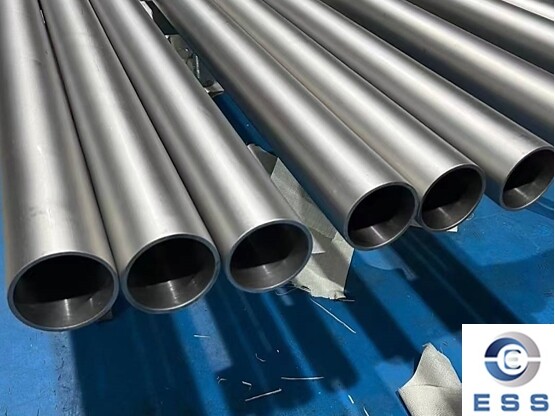Square tubes (SHS
steel) are tubing with a square cross-section.
They are typically made by bending steel strips or plates and then welding
them. Seamless square tubes are also available, manufactured through cold
drawing or hot rolling processes. The main characteristics of square tubes are
symmetrical structure and good load-bearing capacity, making them widely used
in many applications requiring support or frame structures.
Bending square tubes is a common and
technically demanding process in structural manufacturing. Because square tubes
have a closed cross-section, wrinkling, twisting, and cross-sectional
deformation are prone to occur during bending. Therefore, mastering the correct
process and parameters is crucial.

The Basic Principle of Square Tube
Bending
Bending a square tube is the process of
plastically deforming the tube under external force, thereby changing its axial
shape.
During bending, the outer side of the
square tube is subjected to tensile stress, the inner side to compressive
stress, while the neutral layer remains essentially unchanged.
Because the rigidity of the four side walls
of a square tube differs from that of a round
tube (CHS), cross-sectional deformation and wrinkling are easily caused
during bending. Therefore, it is necessary to select an appropriate process
based on factors such as material thickness and bending angle.
Common Methods of Bending Square Tube
The commonly used methods for bending
square tubes are as follows:
1. Cold Bending
Cold bending is a bending process performed
at room temperature.
Suitable for: Square tubes with thin walls
and low strength.
Common cold bending equipment: Manual tube
bending machine, hydraulic tube bending machine, etc.
Properties of cold bending: Simple
operation, low cost, but the bending radius should not be too small, otherwise
it is easy to cause deformation or cracking of the tube.
2. Hot Bending
Hot bending is a method of bending the
square tube by heating it to soften it.
Suitable for: Materials with thick walls or
high strength.
Heating methods: Local heating or overall
heating; commonly used tools include flame heating, induction heating, etc.
Properties of hot bending: Can reduce the
internal stress of the material and reduce the risk of cracking, but the
heating temperature needs to be controlled to avoid degradation of material
properties.
Hot bending temperature reference (carbon
steel square tube): 300°C – 650°C is the commonly used plastic
deformation range; temperatures exceeding 700°C will
affect the metallographic structure and should not be overheated.
Note: Heating must be uniform;
straightening and welding repair may be necessary after heating.
3. Die Bending Method
Die bending is a method of forming square
tubes using a special die.
Applicable to: Mass production.
Common equipment: CNC bending machine, die
bending machine.
Properties of die bending: Die bending can
ensure bending accuracy and consistency, but the die cost is high, making it
suitable for large-scale processing.
Factors Affecting The Bending Quality of
Square Tubes
1. Material Properties
The size, material, wall thickness, and
hardness of the square tube will affect the bending effect.
Generally speaking, MS
square tubes are easier to bend, while high-carbon steel or alloy steel
require higher process requirements.
The softer the material, the easier it is
to bend. The bendability of different materials is as follows:
|
Material
|
Bending Capacity (Easy to Difficult)
|
Precautions
|
|
Q235 / ASTM A36
|
★★★★★
|
Cold bending is sufficient
|
|
Stainless Steel 304
|
★★★★☆
|
High springback
|
|
High-strength Steel Q355/Q460
|
★★★☆☆
|
Hot bending recommended
|
|
Aluminum Alloy
|
★★★★☆
|
Surface easily scratched
|
|
Titanium Alloy
|
★★☆☆☆
|
Hot bending or special mold required
|
2. Bending Radius
A bending radius that is too small will
cause excessive stretching on the outside and excessive compression on the
inside of the square tube, resulting in cracks or wrinkles.
It is generally recommended that the
bending radius be no less than twice the outer diameter of the tube.
Recommended Bending Radius Table:
|
Square
Tube Sizes (mm)
|
Wall Thickness (mm)
|
Cold Bending Radius
R_min
|
Hot Bending Radius
R_min
|
|
20×20
|
1.0–1.5
|
30–40mm
|
20–30mm
|
|
40×40
|
2.0–3.0
|
60–80mm
|
40–60mm
|
|
60×60
|
3.0–4.0
|
120–150mm
|
80–120mm
|
|
80×80
|
4.0–5.0
|
160–200mm
|
120–160mm
|
3. Bending Speed
Excessive bending speed can easily lead to
localized stress concentration in the material, increasing the risk of
deformation.
Insufficient bending speed may affect
production efficiency.
A suitable bending speed should be selected
based on the material properties.
Common Problems and Solutions for Square
Tube Bending
1. Cross-sectional Deformation
After bending, the cross-section of the
square tube may become elliptical or other irregular shapes.
Solutions include using mandrels to support
the internal structure and increasing mold constraint.
2. Wrinkling
The inner side of square tubing is prone to
wrinkling under pressure during bending.
This problem can be reduced by adjusting
the bending radius, using hot bending processes, or using anti-wrinkle molds.
3. Springback
Due to the elasticity of the material, the
bent square tubing may partially return to its original shape, resulting in
angular deviation.
Springback can be compensated for by
over-bending or using correction processes.
Applications of Square Tube Bending
1. Construction
Square tubing is commonly used to
manufacture stair handrails, railings, and steel structural frames.
Bent square tubing meets strength
requirements while achieving an aesthetically pleasing shape.
2. Furniture Manufacturing
Many modern furniture pieces use square
tubing as a supporting structure.
Bending allows for various curved or
irregular shapes, enhancing the aesthetics and practicality of square tubing.
3. Machinery Equipment
In machinery equipment, bent square tubing
is often used to manufacture components such as conveyor frames and protective
covers.
It saves space while ensuring structural
stability.
Cost Estimation for Square Tube Bending
The cost of square tube bending mainly
includes material costs, processing costs, and mold costs. Specific costs vary
depending on material specifications, bending difficulty, and processing
quantity. Generally, cold bending is the least expensive, hot bending is
moderately expensive, and mold bending is relatively expensive, but the cost is
lowest for large-scale production.
How to Choose a Square Tube Bending
Service
1. Equipment Capabilities
Does the company have CNC tube bending
machines, hot bending equipment, and internal support mandrels to ensure they
can meet bending requirements?
2. Provide Complete Drawings
The drawings must include bending angles,
radius (R), allowable tolerances, and appearance requirements.
3. Trial Bending Recommended for Special
Materials
For materials such as stainless steel,
high-strength steel, and thick-walled parts, sample confirmation is required
before mass production.
4. Inspect Processed Samples
Including weld integrity, no surface
indentations, and angle error less than ±1°.
FAQ
1. Which is Better, Cold Bending or Hot
Bending of Square Tubes?
Cold bending: Low cost, high efficiency,
but prone to deformation at small radii.
Hot bending: Suitable for thick-walled,
high-strength steel, allowing for smaller bending radii.
Neither is absolutely better or worse; it
depends on the material and bending requirements.
Yes, but prone to: outer cracking, inner
wrinkling, and cross-sectional distortion.
Hot bending or using a mandrel for cold
bending is generally recommended.
3. How to Bend A Square Tube by Hand?
Positioning Marks: Draw lines at the
bending point and heat evenly with a spray gun until dark red (wall thickness ≤ 3mm can be cold-bent).
Gradual Force Application: Use a lever tool
to apply force slowly in 3-4 stages, holding each stage for 10 seconds.
Angle Correction: Gently tap the over-bent
area with a mallet to fine-tune the angle using the rebound principle.
Summary
Bending square tubes is a seemingly simple
but highly technical process. Whether used in architecture, aesthetic design,
or mechanical manufacturing, proper selection of processes, bending radii, and
processing equipment can effectively prevent deformation and cracking, ensuring
structural strength and appearance quality.
Read more: SHS
Steel vs RHS Steel or Advantages
of Using Square Tubes









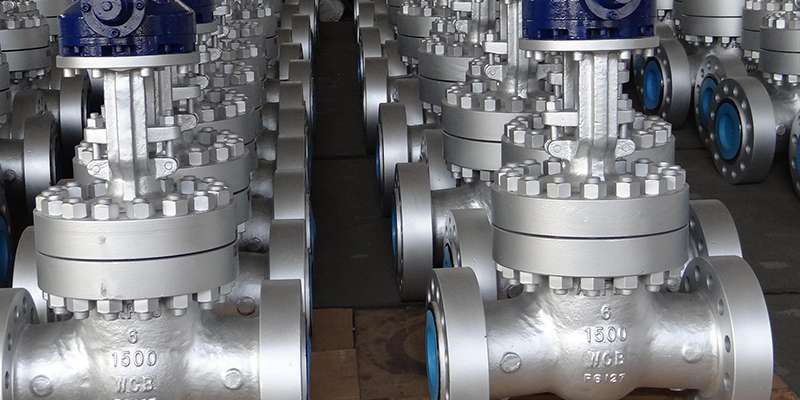



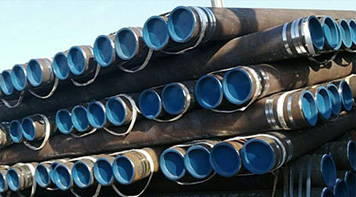 Eastern Steel Manufacturing Co.,Ltd not only improve product production and sales services, but also provide additional value-added services. As long as you need, we can complete your specific needs together.
Eastern Steel Manufacturing Co.,Ltd not only improve product production and sales services, but also provide additional value-added services. As long as you need, we can complete your specific needs together.
